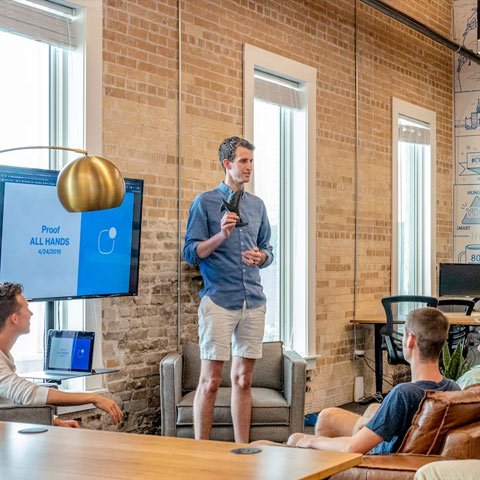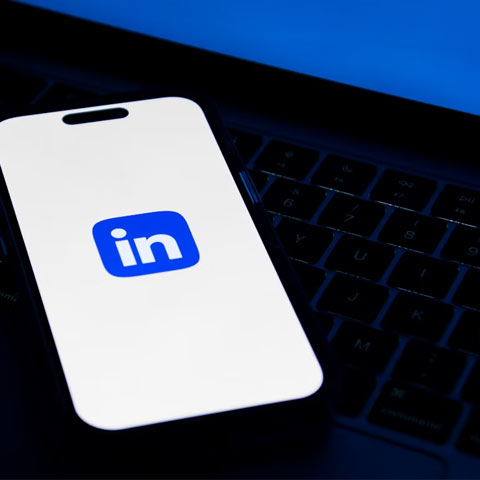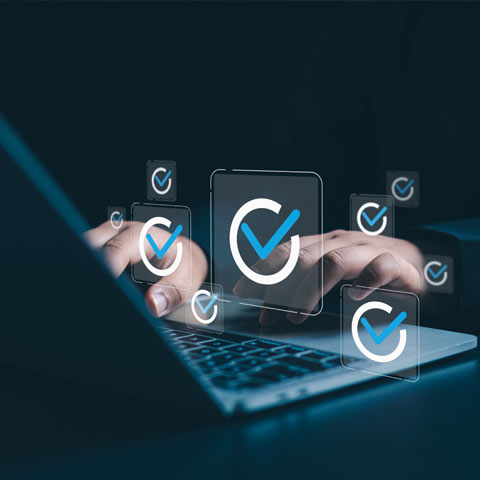Email Automation and 1:1 Marketing

The 2015 Email Industry Census showed that 62% of marketers find success with their automation programs. And organizations that are using more than three-quarters of their email system’s functionality are over six times more likely to rate the ROI from email marketing as ‘excellent’. It’s time to make the most of the technology you have at hand! This guide will explain when certain marketing automation programs are suited, how to make them successful and give you real examples of what results they have brought to some of our clients.
By implementing these programs, you’ll be able to: Build a relationship with customers, encourage interaction with your brand, tailor interactions through the use of behavioral data and reignite brand awareness with lapsed customers.
Get the downloadBelow is an excerpt of "Email Automation and 1:1 Marketing". To get your free download, and unlimited access to the whole of bizibl.com, simply log in or join free. |

|
Email Automation and 1:1 Marketing
The well-known marketing adage says it costs 6–7 times more to acquire a new customer than it does to retain an existing one.
Although acquiring new customers is important, ensuring you have a successful strategy to retain customers can lead to much bigger wins. Existing customers are more familiar with your brand, and are more likely to spend more, more often.
So, how can you use email to get first-time purchasers to buy again and potentially turn them into loyal customers? By using the right marketing automation program to send the right message at the right time.
Marketing automation and ROI
Although marketing automation adoption has been slower than predicted, marketers have started to reap tremendous benefits from it. The 2015 Email Industry Census showed that 62% of marketers find success with their automation programs. And organizations that are using more than threequarters of their email system’s functionality are over six times more likely to rate the ROI from email marketing as ‘excellent’
So what is stopping them? Data integration is perceived as the biggest barrier to marketing automation adoption, but as this guide will show you, all you need to get started is an email address.
What you’ll gain from reading this guide
It’s time to make the most of the technology you have at hand! This guide will explain when certain marketing automation programs are suited, how to make them successful and give you real examples of what results they have brought to some of our clients.
By implementing these programs, you’ll be able to:
- Build a relationship with customers
- Encourage interaction with your brand
- Tailor interactions through the use of behavioral data
- Reignite brand awareness with lapsed customers
The Welcome Program
What is it?
A welcome email is a type of triggered email that is sent once a customer has signed-up to your newsletter, event, loyalty club, etc. Imagine it like responding to the digital handshake your subscriber has just extended to you.
Why does it work?
This is when your customers and prospects are most engaged with your brand, and they’re actually expecting you to send them an email. So don’t miss the chance!
Research has repeatedly shown that real-time welcome emails have higher engagement than other types of email marketing – they typically achieve an open rate of around 50%.
When should you send it?
For the best results, you should start a conversation within moments after contacts sign up, making the most of their interest before it tails off.
The best marketers even send more than one
Don’t make this first email a one-off. See it as the start of a conversation. The best welcome programs use a series of emails to build and maintain customer interest.
What to include in a welcome email series
Welcome emails affect how your customers think and feel about your business. Here’s how to make a good impression:
[Download PDF to see Image]
But beware …
Don’t try to cram all you have to say or offer into one email. It will be so long that your message will get lost.
Use your welcome program to find out more about your subscribers
Because welcome emails are so successful, consider shortening the forms that convert your contacts so you can put more people through the program. They’ll have a more positive customer experience, and be more likely to convert. You could even see a 120% increase in form conversions.
Then use the welcome series to ask for small amounts of information over a period of time. This is called progressive profiling. Timex, a watch retailer, uses this well.
[Download PDF to see Images]
Welcome program success stories
Oxfam, a renowned UK charity, turned their running volunteers’ enthusiasm into action with their welcome email. They used it to persuade volunteers to secure their place by paying the entry fee, and provide them with resources to get started.
[Download PDF to see Image]
But you don’t need to be a big brand to get great results. Big Cup Little Cup, a recently-launched coffee retailer, placed their bet on a welcome email program and won! They started with a simple incentivized welcome email offering a 15% discount for the first order.
And for their first-time customers, they created a welcome series introducing them to the art of making the perfect cup of coffee, methods of recycling their products, and a story about the origins of the coffee.
[Download PDF to see Images]
The thank you program
What is a thank you email?
Thank you emails should be sent whenever a customer has spent time or money on your brand, but they’re so much more than a receipt. View them as a way of humanizing the experience of your brand, which can play a significant part in your retention strategy.
When is it appropriate to send them?
These emails should arrive straight after the action they relate to. Automation is the only way to ensure that crucial timing is right.
[Download PDF to see Image]
Think about the message you’re trying to convey
Thank you emails offer multiple ways to engage with your customers. You can show you appreciate their custom, build trust and confidence, and encourage further interaction with your brand.
Tips on what to include
This depends very much on what you want to communicate, but here are a few ideas:
[Download PDF to see Image]
Want more like this?
Want more like this?
Insight delivered to your inbox
Keep up to date with our free email. Hand picked whitepapers and posts from our blog, as well as exclusive videos and webinar invitations keep our Users one step ahead.
By clicking 'SIGN UP', you agree to our Terms of Use and Privacy Policy


By clicking 'SIGN UP', you agree to our Terms of Use and Privacy Policy
Thank you program success stories
CaféPod used a thank you email following a Friends-themed competition, to encourage sales of their limited edition line of coffee capsules. With it, they converted new email subscribers into customers.
Or you can go the extra mile and create a personalized video, like VSO did. This strategy resulted in a 50% increase in engagement with their valuable donors, making them more likely to care about the cause and donate again in the future.
[Download PDF to see Images]
The upsell and cross-sell programs
What are they?
These types of emails are aimed at recently-converted customers, as they promote a higher-priced or a complementary product to their purchase. After all, if you’ve persuaded them to buy from you once, what better way than a timely email to keep that momentum going?
Why do they work?
The customer might not have stumbled upon the complementary product on their own, or they might not have realized they needed it at the time. They just need a little nudge.
When should you send them?
Testing different times and waiting periods will be the only way to find the optimum strategy for your business and your customers.
Keep this in mind
Give customers the chance to enjoy their initial purchase first. Because once they realize how valuable your product and services are, they’re more likely to trust you, and buy from you again.
Tips on how to create an upsell and cross-sell program
This program requires a bit more effort, but the returns make it worth it!
First, you need the support of your email service provider as you first need to integrate your transactional data with their system. But don’t worry! Any service-focused provider should be able to do that fairly quickly.
Then, you should categorize your products to identify the upsell and crosssell opportunities. You can create sure-fire programs like in the Evans Cycles example that follows - they knew that any customer who purchases a bike would benefit from accessories, regardless of the bike model. Or you can create custom recommendations using an XML feed, or a product recommendation engine.
Next, set up a recurring campaign to launch within a pre-set period of time each time a customer has purchased something from you. This is where you’ll need that transactional data integration to be top notch!
What should these emails look like?
- Make the design simple, but eye-catching with images of the products recommended and direct links to them
- Use short, punchy copy to convey the message right away in your own brand personality
- Use short, punchy copy to convey the message right away in your own brand personality
Keep an eye on the conversion rates
There’s no single success recipe for these types of emails, and the more you test and optimize the better return on investment you’ll get.
Upsell program success story
Evans Cycles, a UK bicycle retailer, have a 12 month nurture program set up to keep their customers engaged following the purchase of a bike. And part of these emails focus on the cross-sell of product categories like clothing, pumps, insurance, locks and servicing.
The birthday program
Sending a ‘Happy birthday’ email to your subscribers can not only support the loyalty and relationship you’re building with them, but also bring great results! After all, it’s hard to get tired of being congratulated on your birthday.
Why do they work?
Take advantage of birthday emails to include an incentive for purchase. Because of their special timing, consumers will have a sense of occasion, and an excuse to treat themselves by purchasing something from your company.
Try these tips to get the best results
- Get your subscriber’s birthday as soon as you can – at the sign up stage, using progressive profiling or a preference center, make getting this data a priority.
- Use an offer or reward - it is the subscriber’s birthday after all, so send them a voucher for an exclusive item when they make a purchase, a discount, or even access to exclusive content.
- Think about timing – give subscribers plenty of time to enjoy their treat, don’t make it available only on the day. If your business has a longer decisionmaking process, like a hotel chain, send them an email a few months before their birthday with a discount if they stay during their birthday month.
- Make it a series and include reminders – couple inbox clutter with distraction, and your email might get missed. Create a series of birthday emails to increase your chances of success.
[Download PDF to see Image]
Birthday program success story
Just because it’s called a birthday email, doesn’t mean you can’t think outside the box! That’s exactly what Mango Bikes, a fun and quirky cycling retailer, decided to do. Together with their agency, toinfinity, they created a campaign encouraging customers to celebrate the anniversary of their purchase by treating their Mango Bikes bike to a birthday gift of accessories, or upgraded components.
The product replenishment and renewal programs
It’s time to order again
Product replenishment and renewal emails are simple nudges meant to remind customers to re-purchase a product before it runs out. Their recurrence is determined by how long your product can be used for. And if the customer has been happy with it, these emails should easily convert into sales revenue.
Why do they work?
Similar to birthday emails, the timing of this program is the secret to its success. They work great in product categories that are consumable, and/or seasonal, and are best sent just before your particular product is bound to run out. Printer ink, gardening supplies, and magazine subscriptions are great examples.
How to make them successful
- Get the timing right – if you only take one tip into account, make it this one!
- Make it a series – just like birthday emails, other distractions are bound to get in the way so a few reminders should work wonders
- Show the image, name and product description – make the product the star of the email
- Have a single call-to-action – there’s no point in distracting subscribers with other links, all you want them to do is repurchase
- Discount or no discount? – start the program without offering any discounts to the product. After it’s been running for a while, you can set a benchmark, test the discount and see if it’s worth offering it
Product replenishment success story
As a retailer of gardening equipment and supplies, seasonal trends are key to Harrod Horticultural’s business. By importing their transactional data into MessageFocus, they were able to identify customers who had purchased a slug repellent exactly a year before. They created a recurring campaign simply asking whether they wish to re-order it.
The re-engagement program
What are re-engagement emails used for?
Re-engagement campaigns (sometimes called reactivation or win-back campaigns) are emails designed to bring inactive contacts back into your marketing communications flow.
What value do they bring you?
These emails address only inactive contacts. They help you identify and suppress those that do not want to hear from you, and who may be wasting your money. After all, if they don’t open or click-through from your emails, how can you benefit from keeping the relationship open?
What does success look like?
When starting a re-engagement program, you have to define a clear objective in order to measure the success of this strategy.
- Are you trying to re-engage contacts who haven’t opened your emails in the past 6 , 12, or 18 months?
- Or the ones who haven’t clicked?
- Perhaps the ones who haven’t purchased anything in the past year?
- What uplift are you hoping to see from the campaign?
- When are you going to review the results?
[Download PDF to see Image]
Want more like this?
Want more like this?
Insight delivered to your inbox
Keep up to date with our free email. Hand picked whitepapers and posts from our blog, as well as exclusive videos and webinar invitations keep our Users one step ahead.
By clicking 'SIGN UP', you agree to our Terms of Use and Privacy Policy


By clicking 'SIGN UP', you agree to our Terms of Use and Privacy Policy









